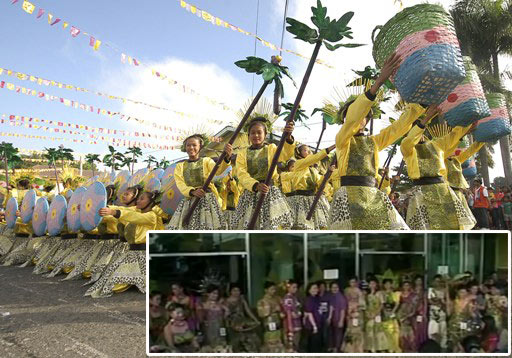THE BLACK NAZARENE
The Black Nazarene (Nuestro Padre Jesús Nazareno) that has came all the way from Mexico through a galleon is a life-sized, dark-colored, wooden sculpture (carver is an Aztec carpenter) of Jesus Christ which has been known to be miraculous by majority of the people, especially its Filipino devotees. The black Nazarene is currently enshrined in the Minor Basilica of the Black Nazarene in Quiapo, Manila, Philippines where novena celebrations are held every Friday throughout the whole year. Roman Catholic tradition holds that the Black Nazarene came from a boat that caught fire, turning it from its original white into black or burnt complexion. For almost 200 years, the Black Nazarene is carried into the streets for procession in a "Caroza" or golden red carriage pulled through the streets of Quiapo by male devotees clad in maroon. Every 9th of January, the feast of the Most Holy Black Nazarene is celebrated while novena masses begin on the first Friday day of the year, in honor of its weekly novena mass held every Friday. This also celebrates the Translacion or the transfer of the image to its present shrine in Quiapo. The devotion to the miraculous Black Nazarene (Nuestro Padre Jesús Nazareno) has attracted huge following among the public. Its popularity, which initially spread to the northern and southern provinces of Luzon, spread over time throughout the country. Devotees pay homage to the Santo Cristo Jesus Nazareno by clapping their hands in praise at the end of every Mass performed at the Minor Basilica of the Black Nazarene. On its feast during January 9, people believed that whoever touched the Nazarene sometimes has been healed of their diseases. Catholics come from all over Manila for the chance that they will be able to get close enough to touch the image and perhaps even receive a miracle. Some devotees also throw towels or handkerchiefs to the people guarding the statue and ask them to rub them on the statue in anticipation of carrying some of that power away with them.
TALONG FESTIVAL
Thousands of local and foreign tourists flocked to Villasis, Pangasinan to witness the first “Talong” (Eggplant) Festival in this agricultural town, the “Vegetable Basket” of the North and “Vegetable home of Pangasinan”.
Villasis Pangasinan celebrated “Talong Festival” on the month of January. It is a 9-day celebration featuring various activities related to “talong”.
Among the highlights were the inauguration of the Villasis Vegetable Trading Post or Bagsakan and the setting up of a one-kilometer-long Talong Grill to help the town establish its own identity. Almost 1.5 kilometers of grilled talong were grilled on the national highway of Villasis and thousands of tourists enjoyed the grilled vegetables with rice.
Other exciting activities such as fashion show competition, street dancing exhibition are presented where they use talong as their props and decoration to their costumes. Visitors also enjoyed watching talong cookfest (101 ways of cooking talong).


No comments:
Post a Comment